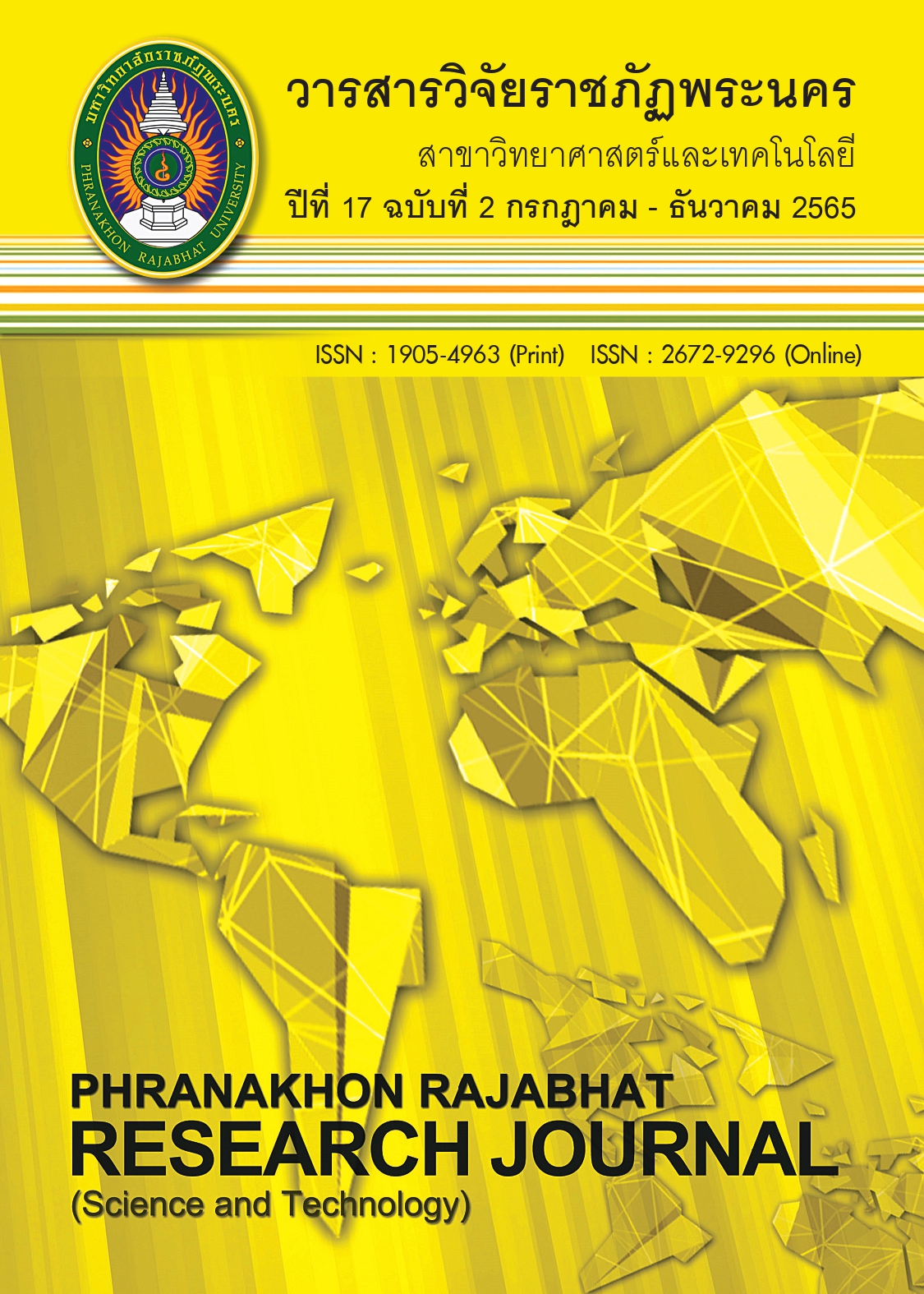BEAN FERMENTATION PROCESS FOR HYDROLYSATE PROTEIN PODUCTION BY BACTERIA FROM FERMENTED SOYBEAN (THUA-NAO)
Keywords:
Protein hydrolysate, Bean, Thua-nao, Amino acidAbstract
This research was to study the production of bean protein hydrolysate by bacteria isolated from fermented soybean (Thua-nao). There were 25 isolates of bacteria from Thua-nao which were studied morphological and physiological characteristics. The result showed gram-positive rod 13 isolates with short- chain arrangement and gram-positive cocci 12 isolates. The degree of hydrolysis showed the highest degree of degradation at 20.70 ± 0.56 percent by isolate TN23. Then, isolate TN23 was strain analyzed by MALDI-TOF MS, which showed a strain of isolate TN23 is Lactobacillus lactis. After the fermentation of 5 different types of beans which were soybeans, red beans, mung beans, black beans, and peanuts by L. lactis TN23, the amino acid profile was analyzed. It was found that the hydrolysates black beans protein was increased for all amino acids. It could be concluded that in the production of protein hydrolysate from fermented black beans by L. lactis TN23 for 72 hours at room temperature, the amount of essential amino acids is higher than in non-fermented black beans.
References
Aguirre, L., Garro, M.S., & de Giori, G.S. (2008). Enzymatic hydrolysis of soybean protein using lactic acid bacteria. Food Chemistry, 111, 976–982.
Canfield, C.A., Patrick, C., & Bradshaw, B. (2019). Amino acids in the regulation of aging and agingrelated diseases. Translational Medicine of Aging, 3(1),70-89.
Carthy, M.A.L., Callaghan, O.Y.C., Piggott, C.O., Gerald, F.R.J., & Brien, O.N.M. (2013). Brewers spent grain; bioactivity of phenolic component, its role in animal nutrition and potential for incorporation in functional foods: a review. Proceedings of the Nutrition Society, 72(1), 117-125.
Chalamaiah, M., Yu, W., & Wu, J. (2018). Immunomodulatory and anticancer protein hydrolysates (peptides) from food proteins: A review. Food Chemistry, 245(1), 205-222.
Chukeatirote, E., In-khian, S., Dajanta, K., & Apichartsrangkoon, A. (2011). Thua Nao – An indigenous fermented soybean of Thailand. Srinakharinwirot Science Journal, 27(1), 197-213.
Julmanlik, T. & Kongruang, S. (2019). Functional properties and applications of egg white protein hydrolysates. Journal of Food Technology, Siam University, 14(1), 69-87. (In-Thai).
López-Barrios, L., Gutiérrez-Uribe, J.A., & Serna-Saldívar, S.O. (2014). Bioactive peptides and hydrolysates from pulses and their potential use as functional ingredients. Journal of Food Science, 79(3), 273-283.
Lamsal, B.P., Jung, S., & Johnson, L.A. (2007). Rheological properties of soy protein hydrolysates obtained from limited enzymatic hydrolysis, LWT - Food Science and Technology, 40(7), 1215-1223.
Latimer, G.W. (2012). Official methods of analysis of AOAC International. (19th edition). Gaithersburg, Maryland. AOAC International.
Nissen, A.J. (1979). Determination of the degree of hydrolysis of food protein hydrolysates by trinitrobenzenesulfonic acid. Journal of Agricultural and Food Chemistry, 27(6), 1256–1262.
Oladejoa, T.C., Olaniyia, O.O., Ayodejib, A.O., & Akinyele, B.J. (2020). Protease produced by Lactobacillus brevis enhanced nutritional values of African yam beans and demonstrated improvement in the growth and blood indices of albino rats. Heliyon, 6(1), 1-10.
Phoupasong, O., Ketbot, P., Phoemsuk, K., Tachaapaikoon, C., Pason, P., Ratanakhanokchai, K. & Waeonukul, R. (2015). Screening and isolation of bacteria from Thua-nao for improving nutritive values of fermented soybean meal in animal feed. Agricultural Science Journal, 46(3), 273-276.
Thongsuk, T. (2019). Dietary behavior of the elderly on era 4.0. Journal of Humanities and Social Sciences, Rajapruk University, 5(3), 232-244. (In-Thai).
Zhang, L., Sun, X., Lu, X., Wei, S., Sun, O., Jin, L., Song, G., You, J., & Li, F. (2022). Characterization of peanut protein hydrolysate and structural identification of umami-enhancing peptides. Molecules, 27, 2853. https://doi.org/10.3390/molecules27092853.
Downloads
Published
Issue
Section
License

This work is licensed under a Creative Commons Attribution-NonCommercial-NoDerivatives 4.0 International License.
โปรดกรอกเอกสารและลงนาม "หนังสือรับรองให้ตีพิมพ์บทความในวารสารวิจัยมหาวิทยาลัยราชภัฏพระนคร สาขาวิทยาศาสตร์และเทคโนโลยี" ก่อนการตีพิมพ์




